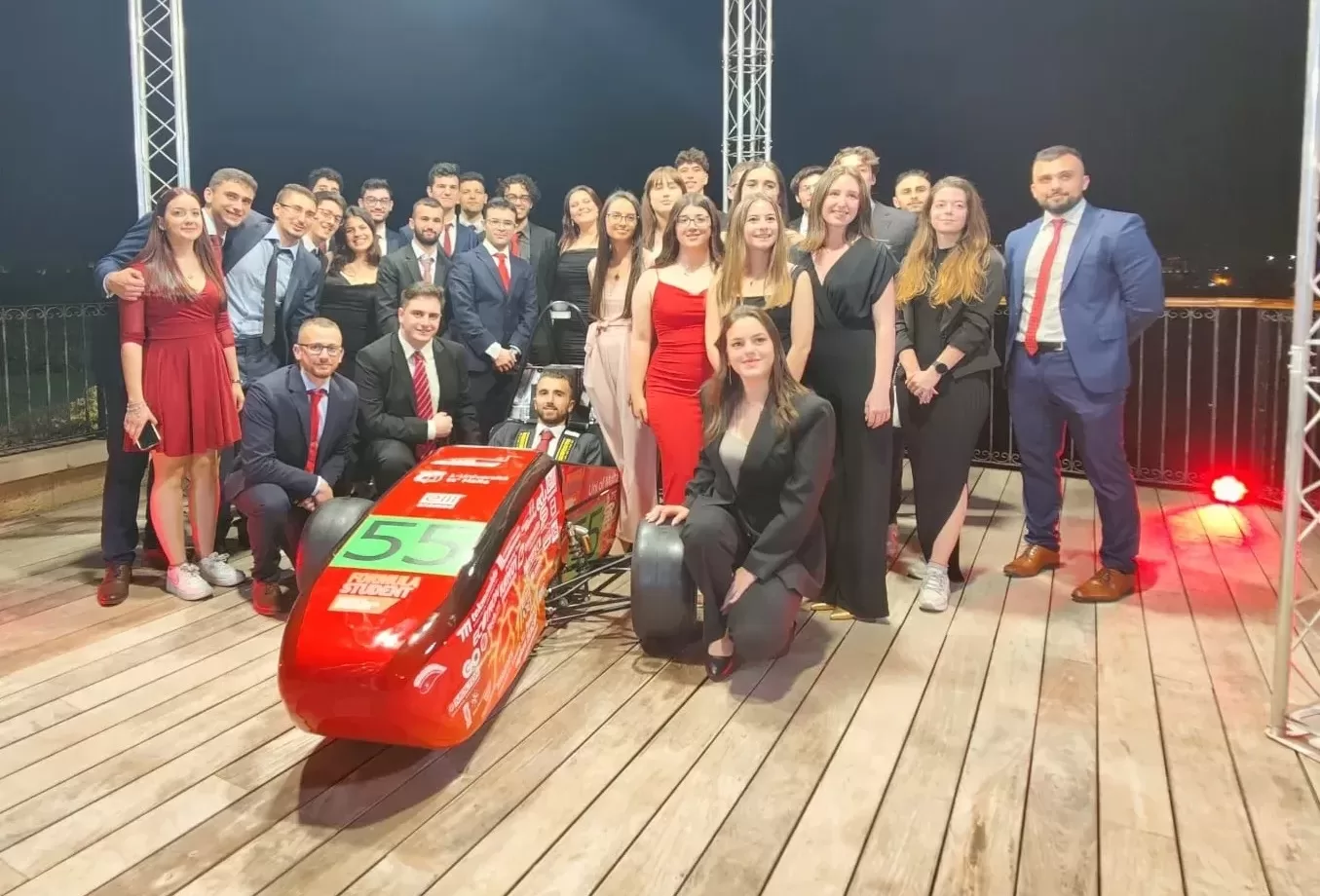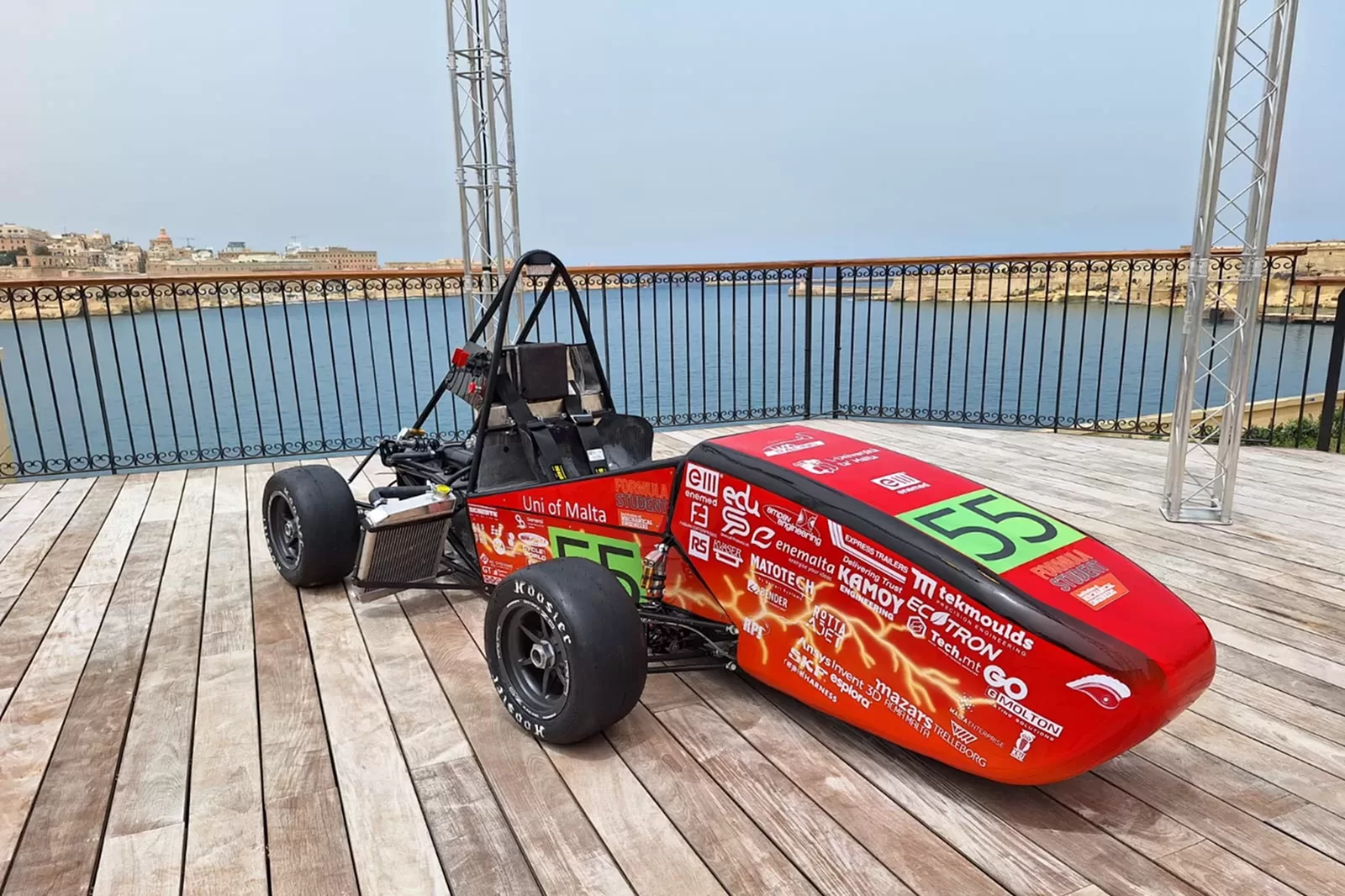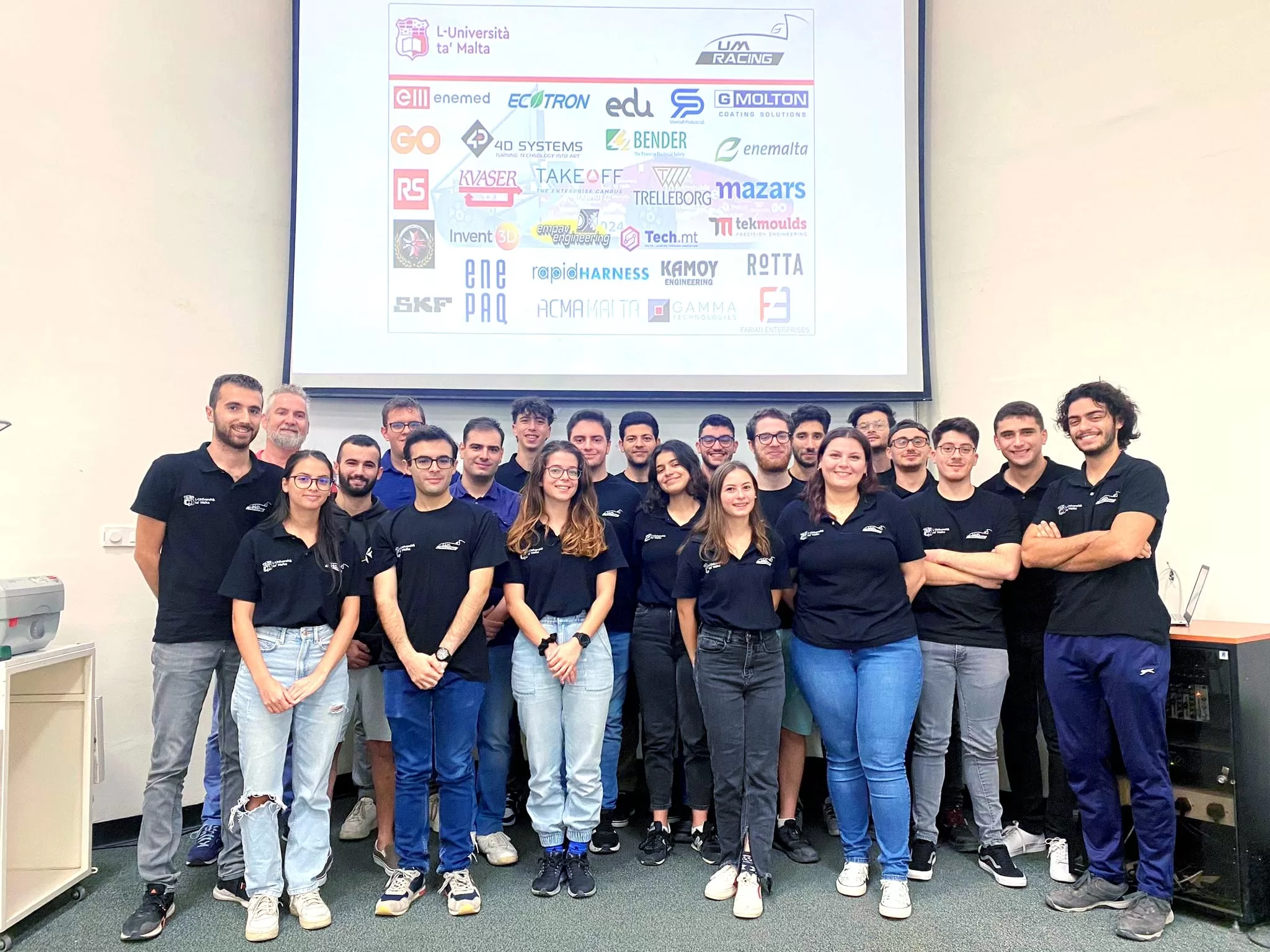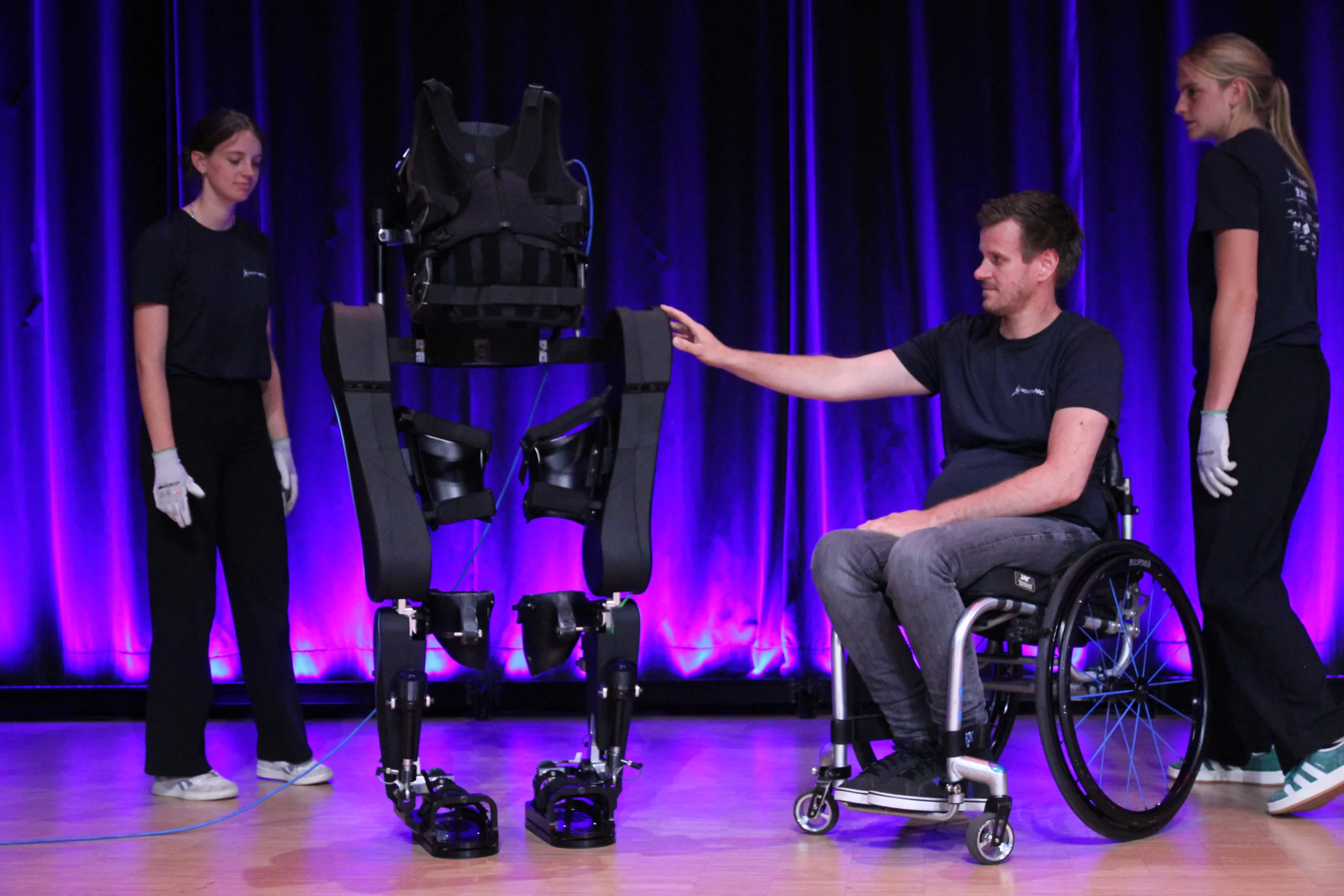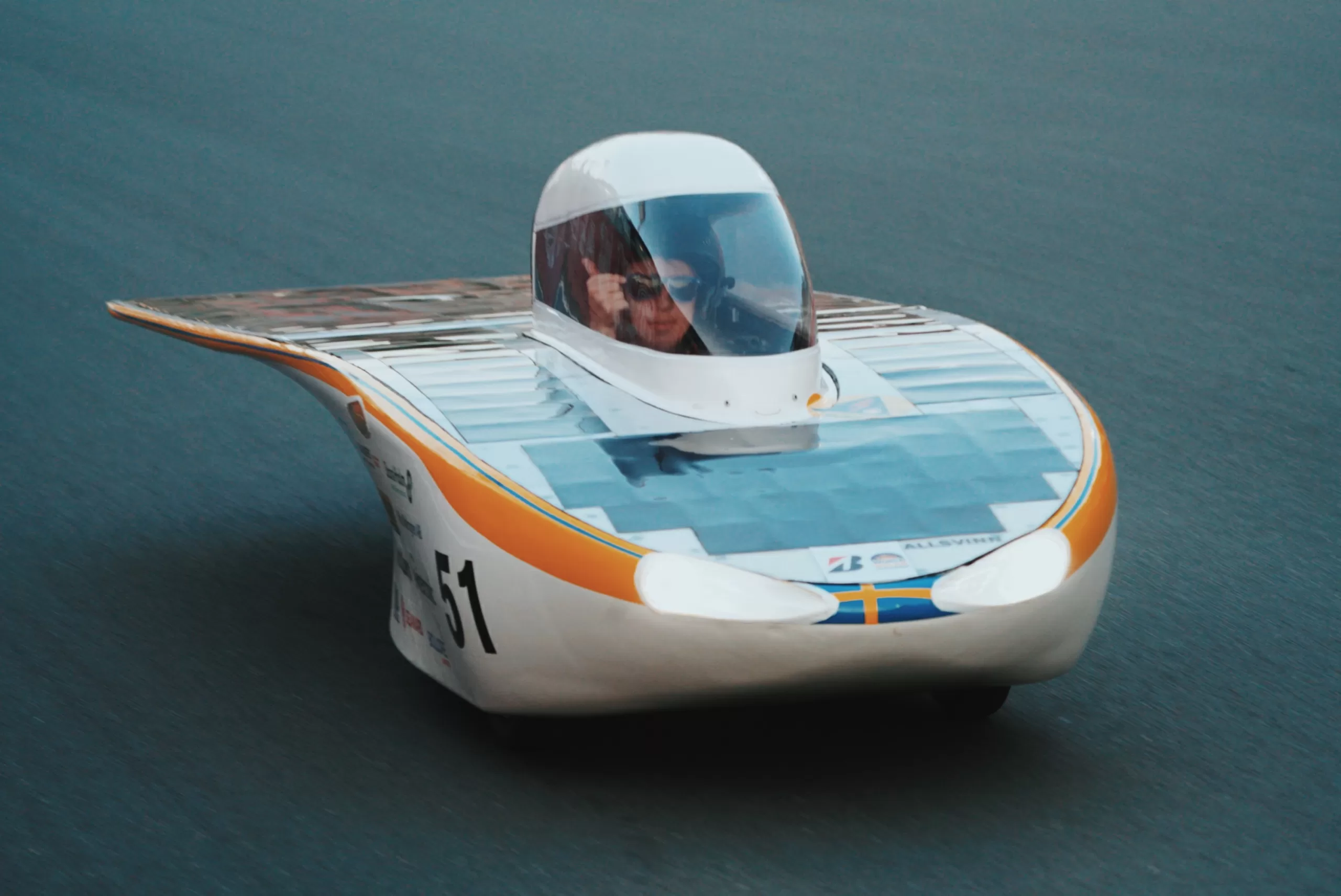– The EV24 has a total mass of 235 Kg and boasts a maximum power output of 80 kW (107 HP). We anticipate swift acceleration from 0 to 100 km/h in just 4 seconds, the EV24 is accompanied by impressive cornering capabilities of 1.6 g.
Powering the EV24 is a Emrax 208 motor. The accumulator, a formidable assembly of 600x Murata VTC5A 18650 Li-Ion Cells from ENEPAQ, delivers a nominal voltage of 360 V, peaking at 420V, and offering a substantial 5.6 kWh capacity at nominal voltage. Ensuring optimal traction and control is the Limited Slip differential.
Complementing the powertrain, our suspension system is engineered for precision and agility. The TTX25 MkII dampers from Ohlins provide exceptional damping characteristics, enhancing stability and responsiveness on the track. Meanwhile, the lightweight Magnesium rims elevate both performance and efficiency.
– I was amazed that building an electric car might cost 100 000 or more. Why it is so expensive?
– Unfortunately, some items are inherently expensive. For instance, we are required by Formula Student rules to use BS4 T45 steel. This is not something that we can source in Malta and it is quite expensive as it is a strong yet lightweight material. Additionally, we are the only Maltese organization that uses carbon fiber. Hence, we have to import the vast majority of our resources and recently shipping into Malta has become more expensive, even more so with Brexit. Even a simple set of Formula Student tyres sets us back around €1,000.
– Batteries are the heart of each electric car. Tell us a bit more why you chose Enepaq modules? What type, how many of them were used to build a solid battery pack?
– A packaged module, which is easy to combine to make a larger battery pack, type; vtc5a and 100 series of the 7 parallel type.
– ENEPAQ conducted a survey to evaluate the pros and cons of our battery modules for the clients. Your team answered that the main value of our batteries was variability of cell configuration and the parallel fusing of cells.
But the team lacked the easy way to ensure positive locking of tabs and detailed documentation on the effect of the capacitance between temperature sensors and negative node of the battery with respect to different voltage levels. The isolation voltage of temperature sensors is low – that was also mentioned as a weak aspect of our battery modules. How did the team manage to solve these negative issues?
– Positive locking was ensured by making a custom tab washers which hold both bolt and busbar, isolation was achieved by isolating the whole sampling circuit and adding capacitance to each sampling point to try to minimize the rf feedback. The samples are also taken at a higher sampling rate then necessary and averaged. Testing is still ongoing to see if these modifications work.
– Batteries need a battery management system (BMS). Your team chose ORION BMS instead of ENEPAQ Tiny BMS. Why? How Orion solution was compatible with modules – you mentioned that the temperature sensors needed custom boards. If you could explain it a little bit more, it would really help the future student teams in their learning process.
– Since this is the first EV we are building, a manufactured approach over custom designed components was preferred. The Orion is the best centralized BMS we could find with a minimum number of modifications needed to adapt to our system. The ENEPAQ Tiny BMS was simply not large enough for all the batteries, besides which it came out after we had finished our design of the mechanical container. Yes, temperature sensors needed custom boards as the Orion thermal expansion modules are suitable only for thermistors. Modifying the temperature sensors to be standard thermistors would probably increase the value of the modules as they would be much easier to implement in both existing and custom systems.
– Last year UM Racing after competition in Silverstone (UK), placed third overall of 110 teams. This was a huge win! But this was with an internal combustion engine. This year 2024 your team will compete with fully electric car. Will the results meet high expectations?
– Most new EV teams unfortunately fail to pass scrutineering as they are not deemed safe by judges. So, we are trying to keep expectations low, with our main goal being to pass scrutineering and have a safe and reliable car for this competition. If we achieve this we will be more than happy. Of course, we are pushing hard to maximize our result and we would love to at least be in within the top 25.
– Malta must be proud of the only one electric formula student team in the country. How does it feel to be in this position for the team?


